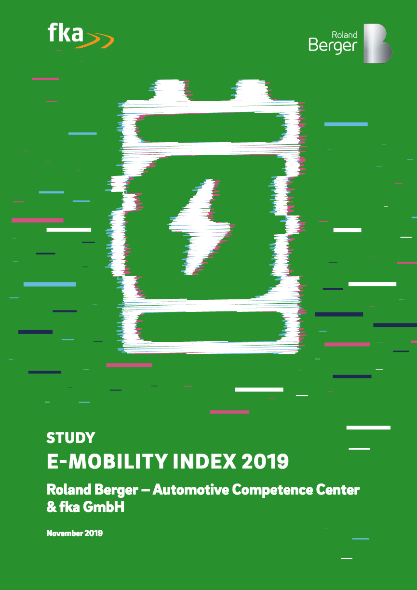E-Mobility Index 2019: China pulls further ahead
![{[downloads[language].preview]}](https://www.rolandberger.com/publications/publication_image/Roland_Berger_STU_556_emobilityindex2019_cover_download_preview.png)
Germany and Europe trail the field in battery cell production. New service models could help


In China, the proportion of electric and hybrid vehicles passed the five-percent mark for the first time in the first half of 2019. In the same period, Germany went into the lead on technology among the seven major automotive nations. These and other findings can be found in the latest issue of the E-Mobility Index.
The index is a joint publication by Roland Berger and fka GmbH. The country comparison combines the three key areas of technology, industry and the market. It enables an objective examination of the status quo in the field of electric mobility in the countries covered by the index – China, Germany, France, Italy, Japan, South Korea and the USA.
"Europe's manufacturers will need to develop new business models to close the gap."
The study shows that the market share of electric vehicles is now significant in all of the countries surveyed. Germany ranks third overall, behind China and the United States. Meanwhile, China continues to occupy pole position in battery cell production – and the findings of the E-Mobility Index 2019 suggest that the country will likely pull even further ahead. Chinese production of battery cells could increase by more than 1,000 percent in the years 2017 to 2022 compared to the period 2016 to 2021.
This is one of the reasons why Europe finds itself trailing significantly on battery cell production, despite having made progress. Besides China, the USA, South Korea and Japan are also ahead. In order to gain a foothold in battery production long term, substantial investments and a profound understanding of the technology will be necessary, the study found. According to the authors, European cooperation could be a solution, which may involve European automobile manufacturers and suppliers with a chemical background positioning themselves as investment partners. This would share the risks and pull together billions in investment capital.
Besides being behind on cell production, European OEMs' problems with profitability are also documented in the E-Mobility Index 2019. The authors state that while the losses incurred in the switch to electric drives could be diminished through greater cost efficiency, profitability would still struggle. The revenue gap could be closed in the future by new business models focusing on Battery-as-a-Service (BaaS).
Some providers are already offering a Battery-in-the-Cloud service for managing and monitoring the battery life of electric vehicles. It enables the recording of real-time data on charging speed, charging cycles and ambient temperature, among other things. With this information as a basis, recommendations can then be made regarding driving style or necessary maintenance checks. In conclusion, the authors state that there are starting points for many different business models along the entire lifecycle of the battery: an integrated value chain covers everything from offering customers battery leasing plans to recycling the raw materials at the end-of-life.

![{[downloads[language].preview]}](https://www.rolandberger.com/publications/publication_image/Roland_Berger_STU_556_emobilityindex2019_cover_download_preview.png)
Germany and Europe trail the field in battery cell production. New service models could help